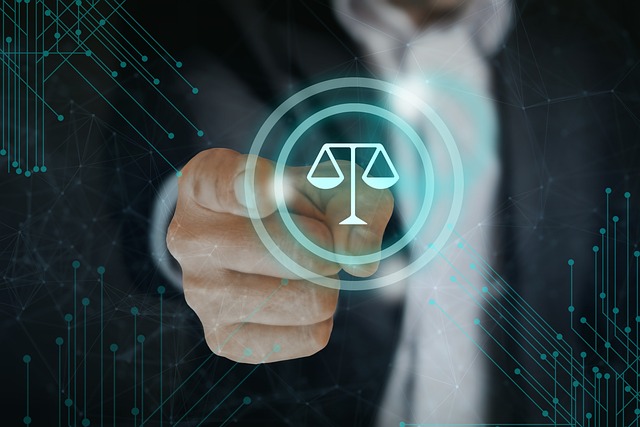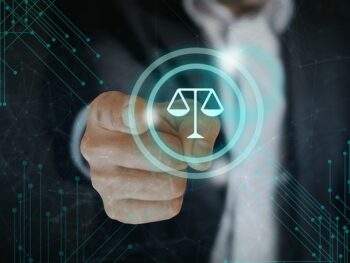In today’s rapidly advancing digital age, the realm of copyright law is faced with unprecedented challenges. With the widespread availability and ease of sharing digital content, protecting intellectual property rights has never been more crucial yet complex. The growth of online platforms, social media networks, and file-sharing technology has revolutionized the way we consume and distribute creative works, necessitating a reevaluation of existing legislation and strategies for enforcement. This article explores the intricate landscape of copyright law in the digital era, delving into its key challenges while offering insightful considerations for shaping a future where creators’ rights are safeguarded in an evolving technological landscape.
The Impact of Digital Technology on Copyright Law
In the digital age, the impact of technology on copyright law cannot be overstated. The ease of accessing and sharing digital content has raised significant challenges for protecting intellectual property rights. With the rise of online platforms, social media networks, and file-sharing technology, it has become more crucial than ever to reevaluate existing legislation and enforcement strategies.
The rapid growth of digital technology necessitates a deep examination of copyright law in order to address its complexities. The wide availability and convenience of sharing creative works have resulted in widespread copyright infringement issues. This calls for a careful balance between promoting innovation and creativity while ensuring that creators are appropriately rewarded for their work.
Moreover, advances in technology have blurred the lines regarding what constitutes fair use or transformative use of copyrighted material. For instance, remixes or parodies created with easily accessible software can lead to confusion when determining infringement. As such, adapting copyright laws to fit the evolving digital landscape remains an ongoing challenge moving forward.
Overall, it is undeniable that digital technology has had a profound impact on copyright law by challenging traditional concepts and requiring adaptations to protect intellectual property rights effectively.
Copyright Infringement in the Digital Age: Challenges and Consequences
In the digital age, copyright infringement has become a pervasive issue with serious consequences. With the ease of sharing and distributing digital content, protecting intellectual property rights has become increasingly challenging. Online platforms, social media networks, and file-sharing technology have drastically transformed how creative works are consumed and distributed.
One of the main challenges in enforcing copyright laws is determining what constitutes fair use or unauthorized reproduction. In an era where copying and sharing content can be done effortlessly, distinguishing between legitimate uses and infringement becomes blurred. This poses significant challenges for both creators seeking to protect their work and legal authorities attempting to enforce copyright laws.
The consequences of copyright infringement in the digital age can be far-reaching. Beyond harming individual artists or content creators financially, it undermines innovation by diminishing incentives for creating new original works. Additionally, it diminishes trust within artistic communities as online piracy devalues copyrighted material. Legal penalties such as fines or even imprisonment serve as deterrents but may not always effectively address the widespread nature of this problem.
Overall, addressing copyright infringement in the digital age requires careful consideration of existing legislation while also adapting strategies for enforcement to align with rapidly evolving technologies that enable infringing practices. Striking a balance between protecting intellectual property rights and allowing for fair use remains a daunting challenge in today’s fast-paced digitally driven world.
Digital Rights Management: Strategies for Protecting Intellectual Property
Digital Rights Management (DRM) refers to the strategies and technologies that aim to protect intellectual property in the digital age. With the rapid growth of online platforms, social media networks, and file-sharing technology, copyright holders face significant challenges in safeguarding their creative works from unauthorized use or distribution. DRM measures encompass a range of techniques such as encryption, watermarking, access controls, and licensing agreements to ensure that only authorized individuals can access or utilize copyrighted content.
Implementing effective DRM strategies is crucial for copyright holders who rely on income from their creations. By utilizing encryption algorithms and other technological safeguards, DRM can prevent unauthorized copying or reproduction of digital content while still permitting legitimate users to enjoy it within certain limits defined by licensing agreements. Through this approach, copyright owners are better equipped to enforce their rights against infringement and preserve the value of their intellectual property.
However necessary DRM may be for protecting intellectual property rights in the digital era; it also raises concerns regarding user privacy and fair use. Critics argue that overly restrictive DRM systems could impede consumer rights like making copies for personal use or engaging in transformative practices such as parody or critical commentary. Striking a balance between preserving creators’ interests through effective DRM implementation while respecting users’ rights remains a complex challenge for policymakers as they navigate these considerations amid rapidly evolving technologies and changing societal norms surrounding copyright law enforcement in an increasingly interconnected world.
Fair Use and Creative Commons: Balancing Copyright Law in the Digital Era
Fair Use and Creative Commons are two approaches that have emerged in response to the challenges of copyright law in the digital era. Fair Use is a legal doctrine that allows for limited use of copyrighted material without permission from the rights holder. It aims to strike a balance between promoting creativity and protecting copyrights by allowing certain uses, such as criticism, commentary, and education. Fair Use provides flexibility within copyright law, enabling individuals to engage with copyrighted works while respecting intellectual property rights.
On the other hand, Creative Commons is a licensing system that offers an alternative approach to traditional copyright restrictions. It allows creators to choose how others can use their work by applying one of several standardized licenses. These licenses grant varying levels of permissions, ranging from unrestricted use (such as attribution-only) to more restricted options (such as non-commercial or no derivative works). Creative Commons promotes collaboration and sharing in the digital age by simplifying the process of legally using creative content while still respecting authors’ rights.
Both Fair Use and Creative Commons strive towards balancing copyright law in today’s digital landscape but take different approaches – one through legal doctrine and exceptions, and another through voluntary agreements facilitated by technology. They both recognize that existing legislation may not adequately address issues arising from widespread online dissemination of creative works; therefore they provide alternatives for establishing fair usage guidelines and can contribute significantly toward ensuring continued innovation without infringing on intellectual property rights.
The Role of Online Platforms in Copyright Enforcement
In the fast-paced digital age, online platforms play a critical role in copyright enforcement. With the proliferation of social media networks and file-sharing technology, protecting intellectual property rights has become both essential and challenging. The ease with which digital content can be shared poses unique difficulties for copyright holders. As a result, there is a growing need to reevaluate existing legislation and strategies for enforcement in order to address these evolving issues effectively.
Online platforms have become hubs for users to upload and share copyrighted material, often without permission from the original creators or owners. This widespread availability of unauthorized content has raised concerns about copyright infringement on an unprecedented scale. Consequently, online platforms face increasing pressure to implement effective measures that deter users from engaging in piracy by promptly removing infringing materials or monitoring their platforms more rigorously.
The future considerations in copyright law must involve collaboration between online platforms, right holders, and policymakers to strike a balance between protecting intellectual property rights while preserving user privacy and freedom of expression. This requires exploring innovative technological solutions such as automated content recognition systems while respecting legal principles like fair use exceptions. By understanding the complex landscape of copyright law in the digital era, stakeholders can develop efficient frameworks that ensure proper attribution of creative works while promoting growth and innovation across various sectors impacted by copyright regulations.
International Copyright Law and the Challenges of Global Digital Distribution
In the current digital age, international copyright law faces numerous challenges. The ease of sharing and availability of digital content has made it increasingly difficult to protect intellectual property rights. Online platforms, social media networks, and file-sharing technology have revolutionized the distribution of creative works, requiring a reevaluation of existing legislation and enforcement strategies. As a result, copyright law must adapt to accommodate these changes in order to effectively navigate the intricate landscape presented by the digital era.
The growth of global digital distribution has created unique challenges for international copyright law. With vast amounts of content being shared across borders on various platforms, ensuring that creators’ rights are respected becomes a complex task. Different countries may have differing legal frameworks or varying levels of enforcement when it comes to intellectual property protection. This creates an environment where unauthorized copying or distribution can occur easily without consequences if there is no unified approach towards enforcing copyright laws internationally.
As more individuals gain online access and technological advancements continue to shape our interactions with digital content, it is essential for copyright laws to evolve accordingly. Protecting intellectual property rights in the face of global digital distribution requires collaboration among nations on harmonizing legal frameworks and strengthening enforcement mechanisms internationally. Only through such efforts can we strike a balance between promoting creativity and innovation while also safeguarding artists’ interests in this rapidly changing landscape dominated by new technologies and online platforms.
Future Considerations for Copyright Law in an Evolving Digital Landscape
The evolving digital landscape has brought about numerous challenges for copyright law. One of the main considerations for the future is finding a balance between protecting intellectual property rights and facilitating the free flow of information in an increasingly interconnected world. With the widespread availability and ease of sharing digital content, it has become imperative to reassess existing legislation and strategies for enforcement.
Another crucial aspect that needs attention is adapting copyright law to address emerging technologies such as artificial intelligence (AI) and blockchain. AI-generated content poses unique challenges in determining ownership and ensuring adequate protection. Additionally, blockchain technology offers opportunities for secure licensing arrangements but also raises questions surrounding jurisdictional issues and immutability.
Furthermore, there is a need to reconsider fair use provisions in an era where remix culture thrives on social media platforms. Finding ways to strike a balance between encouraging creativity without infringing upon creators’ rights remains an ongoing challenge.
It is important that policymakers constantly evaluate how copyright laws can adapt to technological advancements while upholding principles of fairness, innovation, and protection of creative works in this fast-paced digital age.









 Do You Need a Lawyer to Buy a House?
Do You Need a Lawyer to Buy a House?
Leave a Reply